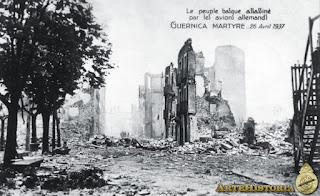martes, 31 de enero de 2017
Groundhog Day
Groundhog Day is a US
"holiday" (although nobody gets a day off!) which takes its tradition
from the German Candlemas day. On 2nd February, Germans would watch the
badger emerge from its sett to see whether the animal cast a shadow on
the ground, which it would only do if it was a sunny day. If it did, the
tradition went that there would be another six weeks of wintry weather.
If it didn't - in other words if the weather was cloudy that day), then
Spring had arrived early.
Having arrived in America, the tradition was carried on, using a
groundhog (a small animal from the squirrel family, also known as a
woodchuck) instead of a badger.
- The first groundhog was eaten after his prediction. The tradition began with a sign from the rodent followed by a feast which included menu items containing groundhog. Once Groundhog Day became famous, the items containing the animal were removed from the feast.
- Punxsutawney Phil does not live in his own crafted burrow as do other groundhogs. He lives in a climate-controlled, man-made burrow.
- While Phil is the most well known groundhog, there are others across the nation that are brought out for their weather predictions.
- Punxsutawney Phil’s accuracy is only 30-40% which doesn’t make him very credible. This superstition is more of a morale booster for those that are enduring a harsh winter.
- While it is common for groundhogs to come out of their burrows this time of year, it really has nothing to do with predicting the weather. This is their mating season, so the males will come out of their holes, find the females, and then both go back underground.
Etiquetas:
4th,
aprendizaje cooperativo,
biblioteca,
ceip ntra sra de guadalupe,
educación,
english,
españa,
evolución,
extremadura,
familia,
formación profesorado,
groundhog day,
junta de extremadura,
miajadas
miércoles, 25 de enero de 2017
Día de la Paz, El Guernica
Material para trabajar en clase el Día de la Paz, CEIP Ntra. Sra. de Guadalupe de Miajadas.
Dirigido al alumnado de3er ciclo de Educación Primaria.
Un poco de Historia
El Guernica es el
cuadro más famoso de Picasso. Se ha convertido en un símbolo, en un
grito contra la barbarie y el horror de las guerras. Ha tenido y tiene
diversas interpretaciones.
El pabellón de España
de la Exposición Universal de París de 1937 se convierte en un grito de
auxilio del gobierno de España de la II ante el avance de los militares
golpistas, la barbarie de la Guerra Civil y la pasividad de las
democracias europeas. Para ello se movilizaron los nombres más
reconocibles de la cultura española de la época, entre los que se
encontraban Pablo Picasso, Miró (el mural El Segador, obra desaparecida)
o Julio González (La Montserrat). El gobierno encarga al pintor,
afincado en Francia, un cuadro de grandes dimensiones para que presida
el pabellón español de la Exposición Universal de París de 1937.
El Guernica tiene un
fuerte valor histórico y de denuncia; se pinta en plena Guerra Civil.
Pocos días antes de iniciar el cuadro, la aviación alemana que apoyaba a
Franco bombardeó el pueblo de Guernica (Vizcaya). Este grave hecho
afectó enormemente a Picasso y le indujo a titular así el cuadro.
Debido al estallido de
la Segunda Guerra Mundial, el artista decidió que la pintura quedara
bajo la custodia del Museum of Modern Art de Nueva York hasta que
finalizara el conflicto bélico. En 1958 Picasso renovó el préstamo del
cuadro al MOMA por tiempo indefinido, hasta que se restablecieran las
libertades democráticas en España, regresando la obra finalmente a
nuestro país en el año 1981. Desde 1992 el lienzo está colgado en una de
las salas del Museo Reina Sofía de Madrid. Cumpliendo con el deseo del
artista, la obra vino a España una vez instaurada la democracia.
Datos técnicos y artísticos
Picasso antes de
iniciar el cuadro hizo numerosos bocetos preparatorios sin alusiones al
bombardeo. Son un alegato contra la barbarie de las guerras.
El lienzo tiene unas
dimensiones considerables (3,50 x 7,80). Lo pinta con la técnica del
óleo en blanco, negro y variaciones de grises, como símbolo de luto,
para acentuar el dramatismo.
Es de estilo
cubista (estilo que descompone las imágenes reales y las representa en
un mismo plano de forma geométrica), expresionista y simbólico. La
composición se organiza en triángulos, destacando el central. Y en dos
grupos de figuras representadas: seres humanos (soldado herido, varias
mujeres y niño muerto) y animales (toro, caballo y paloma). La línea
está claramente definida.
Información obtenida del blog https://profeanacob.wordpress.com/2016/01/24/por-que-el-guernica-es-un-simbolo-de-paz/
viernes, 20 de enero de 2017
lunes, 16 de enero de 2017
Learn Human Body - Cardiovascular System
The circulatory system consists of the heart, blood vessels and blood. It moves blood through the heart and around the body. Blood gives our cells the oxygen and nutrients they need. Blood also collects waste products, such as carbon dioxide, and takes them to the parts of the body which expel them.
martes, 10 de enero de 2017
Urinary System
Our
excretory system excretes waste from our body. Two organs called
kidneys clean waste from blood. The waste combines with water to make
urine. Urine travels down two tubes called ureters and collects in a bag
called the bladder. When the bladder is full, the urine leaves the body
through the urethra.
Our body also eliminates waste through the skin. This waste is in the form of a liquid called sweat.
Etiquetas:
4th,
aprendizaje cooperativo,
biblioteca,
cáceres,
ceip ntra sra de guadalupe,
educación,
españa,
extremadura,
familia,
miajadas,
science
Digestive System Human Body for Kids
Etiquetas:
4th,
AICLE,
ampa,
bilingual,
body,
ceip ntra sra de guadalupe,
CLIL,
curso,
english,
españa,
extremadura,
junior emprende,
miajadas
Suscribirse a:
Entradas (Atom)







